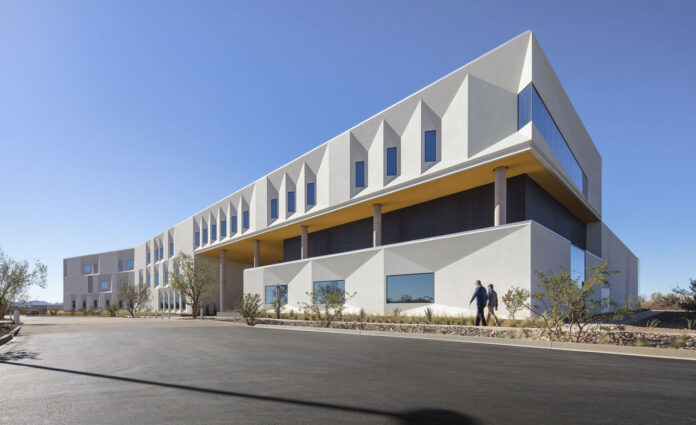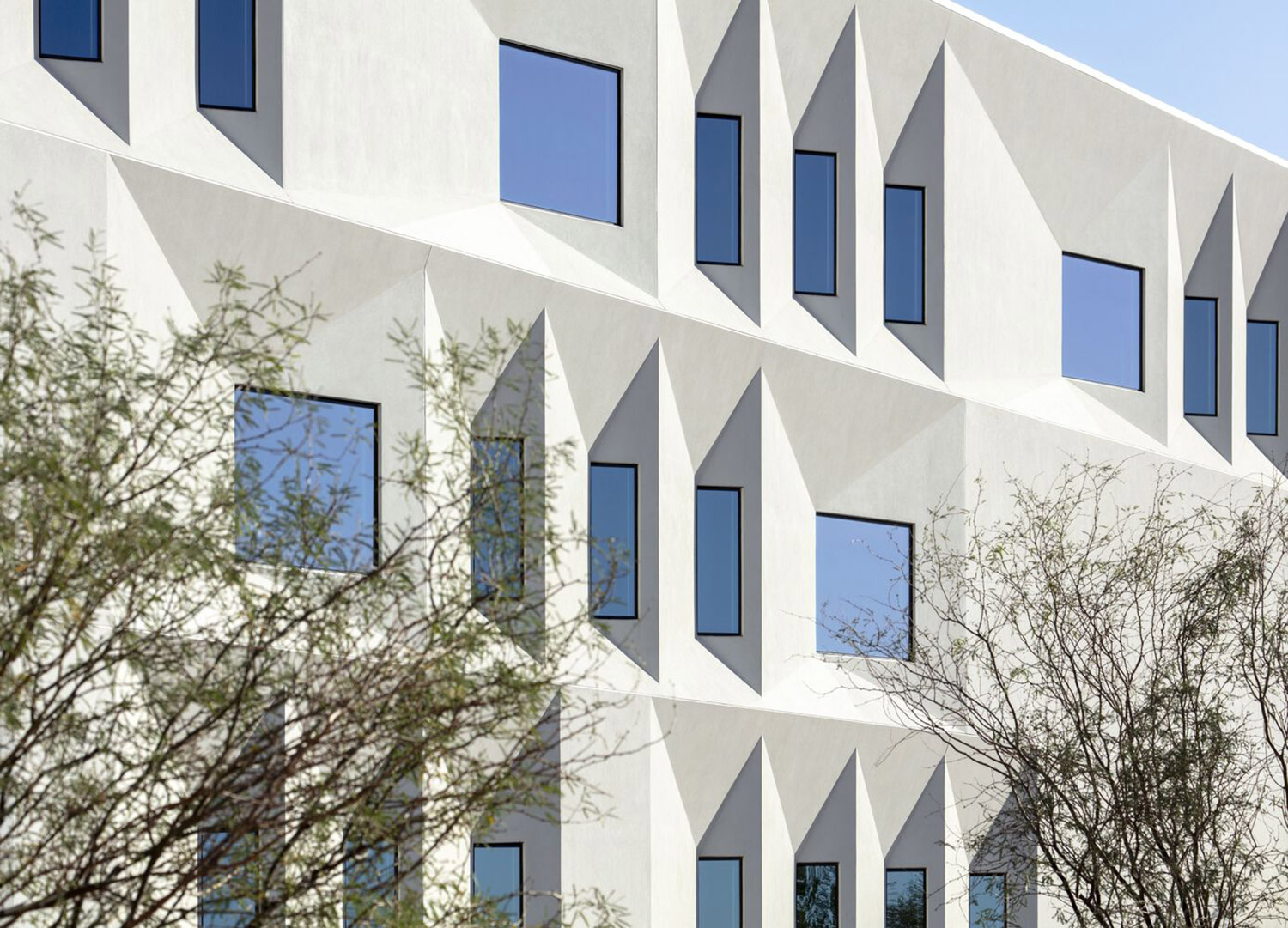Facade engineers and architects are spearheading a revolution in building design, harnessing advanced computational tools to create innovative self-shading facades. These skilled professionals blend biomimetic principles with cutting-edge technology to optimize thermal performance and energy efficiency. By leveraging parametric modeling, solar radiation simulations, and sophisticated optimization algorithms, they craft climate-smart building skins that enhance both aesthetics and functionality. Their work not only reduces energy consumption but also significantly improves occupant comfort, marking a new era in sustainable architecture where digital innovation meets environmental responsibility.
Generative Geometry
Digital Design Meets Solar Defense
Self-shading in architecture draws inspiration from nature’s adaptive strategies, particularly plant morphology and desert organisms’ heat-mitigation techniques. This biomimetic approach leverages computational design to optimize thermal performance through geometric manipulation.
The primary thermal performance benefits of self-shading facades include reduced surface temperatures on sun-exposed areas, decreased heat transmission through building envelopes, and improved energy efficiency and occupant comfort.
No doubt that the integration of advanced computational design tools is revolutionizing facade engineering, enhancing both performance and aesthetic appeal. Today’s facade engineers and building architects rely on three main categories of tools:
Parametric Modeling Tools like Grasshopper for Rhino enable architects to create adaptive geometries and customizable shading systems with adjustable parameters such as louver depth and spacing.
Solar Radiation Simulation Tools like Radiance and EnergyPlus assess facade performance, quantifying the effectiveness of self-shading strategies in reducing solar gain and optimizing daylighting.
Optimization Algorithms like genetic algorithms in tools like Galapagos automate the search for optimal geometric configurations, evaluating design iterations to balance thermal performance, aesthetics, and constructability.
Sculpting Shadows
Crafting Climate-Smart Building Skins
Facade engineers and architects can employ various techniques to create shading effects through the facade’s own structure, eliminating the need for additional shading devices.
By rotating or translating elements such as bricks, panels, or louvers, designers can control solar exposure throughout the day. For example, a brick facade with strategically rotated units can cast shadows on adjacent areas, reducing direct sunlight penetration. This technique allows for dynamic shading patterns that adapt to changing sun angles.
By incorporating sloped or angled surfaces into the facade design and tilting facade elements away from the sun’s path, they can minimize direct solar radiation on the building envelope. This strategy is particularly effective for roof designs and upper floors, where solar exposure is often most intense.
Finally, intricate facade patterns and textures can create micro-shading effects that contribute to overall thermal performance. By designing facades with depth and relief, architects can generate small-scale shadows that reduce heat absorption. These patterns can range from simple repetitive geometries to complex algorithmic designs, often inspired by natural forms or cultural motifs.
These geometric strategies, when combined with computational design tools and performance simulations, allow architects and engineers to create highly efficient, climate-responsive facades that optimize thermal comfort while maintaining aesthetic appeal.
Self-Shading Facades and the Human Experience
The Comfort Boost
On a larger scale, using sensors and digital twin technology, designers can continuously monitor surface temperatures, heat flux, and solar radiation on facade components. These measurements are then compared with simulated data from computational fluid dynamics (CFD) and finite element analysis (FEA) models, allowing for rapid validation and refinement of design strategies.
Studies have shown significant energy savings through optimized self-shading geometries. This translates to reduced cooling loads and improved overall building energy performance. In hot climates, some self-shading designs have achieved up to 30% reduction in annual cooling energy consumption.
Integration with Smart Building Systems
Self-shading facades are also increasingly integrated with building management systems (BMS) for dynamic performance optimization. Machine learning algorithms analyze real-time data from facade sensors, weather forecasts, and occupancy patterns to adjust HVAC systems, artificial lighting, and even adaptive shading elements, maximizing energy efficiency and occupant comfort.
I conclusion, beyond energy efficiency, self-shading facades significantly impact occupant comfort. Daylight analysis tools help designers balance shading with natural light penetration, reducing glare while maintaining visual comfort. Thermal comfort simulations, using metrics like Predicted Mean Vote (PMV) and Percentage of People Dissatisfied (PPD), ensure that the facade design contributes to a comfortable indoor environment. Some studies have reported up to 15% improvement in occupant satisfaction scores in buildings with optimized self-shading facades compared to conventional designs.
Case studies
Arizona State University Health Futures Center, Phoenix, AZ
Architects: CO Architects
Structural Engineer: Advanced Structural Engineering
The Arizona State University Health Futures Center in Phoenix, designed by CO Architects, showcases innovative facade engineering in response to the harsh desert climate. Facade engineers from Advanced Structural Engineering and architects collaborated to create a self-shading exterior that significantly reduces solar heat gain while maintaining aesthetic appeal. The building’s trapezoidal-shaped, undulating facade features angled glazing on the east and west facades, facing north to minimize direct sun exposure. This passive design strategy, developed using a custom parametric tool through 3D Generative Innovator, is projected to reduce solar heat gain by 35% or more. The light ecru EIFS-clad exterior creates a striking visual rhythm of faceted forms and shadows, demonstrating how computational design can optimize both performance and aesthetics in challenging environments. This project exemplifies the crucial role of facade engineering in achieving sustainable, climate-responsive architecture.

Pinal County Attorney’s Office Building (2022)
Architects : DLR Group
Engineers: Bowman Consulting Group
Photography: Matt Winquist The Pinal County Attorney’s Office in Florence, Arizona, showcases innovative facade engineering inspired by the saguaro cactus. DLR Group‘s architects and engineers from Bowman Consulting Group collaborated to design a self-shading facade that manages glare and solar heat gain in the harsh desert climate. The design features 120 custom-designed steel fins strategically placed to shade windows, casting shadows on 56% of the building’s surface. Additionally, off-the-shelf ribbed metal panels create micro-shading effects. The facade system includes a 2-inch gap for heat dissipation, functioning like a vertical chimney. This biomimetic approach resulted in a 22% decrease in solar gain on the south side and a 14% decrease on the west side during peak hours. The project demonstrates how facade engineers and architects can leverage natural inspiration to create energy-efficient, context-appropriate designs.

Useful links:
https://www.ribaj.com/intelligence/climate-adaptation-sloping-facades-to-reduce-overheating
https://www.icd.uni-stuttgart.de/research/research-projects/wtt-zerofassade/
As the Editor of FacadeToday.com, I merge my passion for Design, Architecture and Technologies with three decade of experience collaborating with entrepreneurs across many industries. My career has centered on fostering innovation, scaling business opportunities, and bridging gaps between technical experts, business developers, and creative visionaries. I thrive at the intersection of sustainable solutions, material advancements, and smart technologies, curating insights on themes like energy-efficient facades, smart tech, and advanced manufacturing. With a commitment to lifelong learning, I aim to empower architects and facade engineers by translating innovations into actionable knowledge, driving the industry forward through purposeful connectivity and cutting-edge practices.







